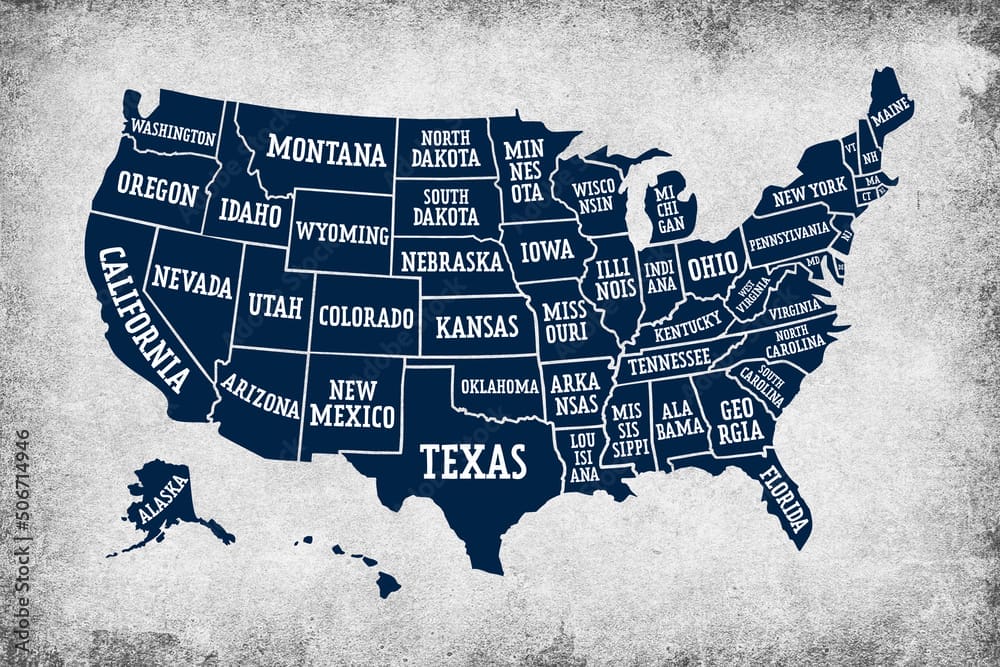My five-year-old has already decided that she’s not going to college.
She doesn’t want to sleep there, she says. Instead, her plan is to move in with her aunt.
At least that’s one kid I don’t have to worry about when it comes to paying for college.
In case your five-year-old hasn’t already decided her future, read on to learn about 529 educational savings plans, one of the best ways to pay for college.
My students are already worried about paying for college for their unborn children.
Whenever I teach personal finance to law students, we take some time to at the beginning of class to discuss what each of us would do with financial freedom.
This is always my favorite part of class.
Over the years, I’ve had students who want to travel the world, start businesses, pursue hobbies, and take care of aging parents.
I’ll never forget the student who wants to coach high school football after working as a lawyer. Or, the student who simply wants the time to exercise every day. As she put it, “look good, feel good.”
Of all the goals I’ve heard, there is one that comes up more than any other: paying for their children’s education.
A lot of times, I hear this goal from students who don’t even have kids yet. I think that shows how important education is for many people. It also shows how worrisome it is to think about paying for college.
What’s troubling is that my students typically have their own student loans to pay back. And, before they’ve even started their careers, they’re thinking about paying for the education of their unborn children.
That’s intense. But, understandable.
Some students share that they want to pay for their children’s college because they benefitted from their parents paying for college. These students were grateful for the opportunities their parents gave them.
For other students, they want to pay for their children’s college because their parents did not pay for their college. They want to help their children avoid student loan debt as they begin their careers.
For most people, saving for college is a top priority.
According to a recent study by Fidelity, 74% of parents say they are currently saving for college.
77% of parents think that the value of a college education is worth the cost.
At a time when there is a lot of uncertainty surrounding student loans, it’s never been more important to have a plan to pay for your kid’s education.
One of the best ways to do that is with a 529 college savings plan.
In today’s post, we’ll discuss the major advantages of 529 plans. We’ll also learn how you can estimate the cost of college for your child so you can figure out how much you should be saving today.
Be warned, the numbers are scary.
What is a 529 college savings plan?
529 college savings plans are state-sponsored, tax-advantaged investment accounts. The name stems from Section 529 of the Internal Revenue Code.
While there are certainly other ways to save for college, 529 plans are hard to beat.
The reason 529 plans are such a great way to save for college is because you receive triple tax benefits:
- Most states offer tax breaks on contributions to its residents for participating in the in-state plan. For example, as Illinois residents, my wife and I can deduct up to $20,000 in contributions to the Illinois-sponsored 529 plan from our state income each year.
- Your investment earnings grow tax-deferred, meaning your investments will benefit from tax-free compound interest. That means your savings will grow faster without being hindered by taxes.
- Investment earnings are 100% free from both federal and state taxes when used for eligible education expenses. Eligible education expenses include things like tuition, room and board, books, computers and other standard costs associated with college.
An investment opportunity with triple tax benefits like this is almost unheard of.
How do 529 plans work?
In basic terms, 529 plans are investment vehicles designed to grow your contributions and make paying for college easier. When you invest in a 529 plan, you are generally investing in some combination of stocks and bonds.
That means there is risk involved, just like with any other investment.
Once you open your 529 account, you will choose how to invest your contributions. In this sense, 529 plans are similar to a 401(k) plan offered by your employer.
Like with your 401(k) at work, a 529 plan will typically provide you different investment choices within the plan. You can choose how aggressive or conservative you want to be with your investments.
The investment options will vary depending on which state’s 529 plan you choose.
Every state offers a 529 plan.
Every state offers a 529 plan. You don’t have to be a resident of that state to use its plan. You also don’t have to use your 529 savings for a school located within that state.
Regardless of what plan you choose, the federal tax incentive remains the same. Money invested in 529 plans grows tax free. That means no federal taxes on your 529 earnings as long as the money is used for qualified educational expenses.
While you also won’t have to pay state tax on earnings (same as federal), there are some additional state tax implications to be aware of.
These state tax benefits are a bit more complicated because they vary state-to-state.

Remember, there is no federal tax benefit when you make your original contributions. But, most states do offer its residents a tax break on their original contributions for investing in-state.
Morningstar has a detailed breakdown of which states offer additional tax benefits to its own residents.
If your state offers tax benefits to invest in-state, that’s usually a good reason to choose your in-state plan.
My wife and I use Illinois’ 529 plan, called Bright Start 529, for the added tax benefits we receive as Illinois residents.
Besides the state tax benefits, keep in mind that not all 529 plans are created equal. 529 plans may offer different investment options or charge different fees. States may also provide different level of oversight, which may be important to protect your investments.
You should always do your homework before choosing a plan to find one that matches your goals.
I’ve found Morningstar’s rankings and analysis of each state’s plan to be the most helpful tool. According to Morningstar’s most recent rankings, the top 529 plans are offered by:
- Alaska
- Illinois
- Massachusetts
- Pennsylvania
- Utah
To recap, when choosing which 529 plan to participate in, pay attention to what investment options are available within that plan. Also, look to see if you will qualify for additional state tax benefits.
How much can I contribute to a 529 plan?
Besides choosing the type of investments in your 529 plan, you can also choose how and when to contribute.
Some people prefer automatic monthly contributions. Others prefer to contribute sporadically throughout the year, like when they receive a bonus at work.
Unlike with most retirement plans, there are no yearly contribution limits for 529 plans. Instead, each state sets lifetime contribution limits per beneficiary, typically ranging from $235,000 to $550,000.
This is a good time to point out that you can have a separate account for each of your kids. This allows you to save more money overall sine the contribution limits apply separately to each kid.
It’s also a good idea to have separate accounts when you have different investment horizons based on the ages of your kids.
For a complete list of the contribution limits by state, click here.
By the way, if those limits sound incredibly high to you, you may be in for a shock when it comes time to pay for college.
Keep reading to see what the projected costs of attending college are for a current kindergarten student.
What happens if my kid does not go to college or I have money left over?
If you have money left over in your 529 plan, you have some options. You can use that money for one of your other kids, without penalty. You can save it for a grandchild.
As of 2024, you can roll extra 529 funds into a Roth IRA for the beneficiary, with some limitations. This was a terrific development for families worried about having too much money saved for college.
If none of the available options work for you, rest assured that your money will always still be your money. You will have to pay a penalty and some taxes. Any unused earnings are subject to a 10% federal tax penalty plus income tax.
How much should I be saving in my 529 college savings account?
This is the ultimate question, right?
While nobody can say for certain how much college will cost or how your investments will perform, we can make reasonable estimates to help form your strategy using an online calculator.
I like the calculator available on Illinois Bright Start 529 website. What’s nice about this website is you can look up the future estimated cost of attending specific schools around the country.
I also like using calculator.net. They have a College Cost Calculator where you can see how much college costs on average today and how much it is estimated to cost when your child starts college.
Whatever online calculator you use, you’ll have to make some assumptions when you start plugging in numbers.
For example, nobody can predict what your exact investment return rate will be. That said, you still need to plug a number into the calculator.
What number should you use for investment return rate?
- Bankrate.com and NerdWallet each suggest using an investment return rate of 10% annually (before inflation) based on historical stock market performance.
10% seems like a reasonable number to use, keeping in mind that we’re just looking for an estimate to help us decide how much to save for college. Your actual returns may be lower.
Besides the estimated return rate, you’ll also need to account for the rising costs of college. Most of the online calculators recommend you assume the cost of college will increase by 5% each year. That also sounds reasonable to me.
One last thing: it’s never a bad idea to run through different investment scenarios to get a more complete picture. Try playing around with what the numbers look like if your investments only return 8% per year. Or, see what happens if college costs increase by 6% per year.
With these assumptions in mind, you can start to get an idea of how much you should be saving for college today.
Be warned, the dollar amount will probably scare you.
Let’s look at an example using a current kindergarten student.
Illinois’ Bright Start 529 calculator estimates that the cost of this kindergarten student attending the University of Illinois Urbana-Champaign will be $264,735.
Assuming you don’t have any current savings and you estimate a 10% annual rate of return, the Bright Start 529 calculator indicates you should save $10,796 per year.
Does that sound like a lot of money?
Want to really be scared?
What if your kindergarten student is interested in private school for college? Maybe your child has his heart set on Northwestern University?
Bright Start 529 estimates the cost of Northwestern University for your kindergarten student will be $691,942. That means if you have no current savings, you should be contributing $28,217 per year.
Yikes.
And that’s only for one kid.
How are you supposed to save that much money for college?
If these numbers sound scary to you, what can you do about it?
I have some thoughts:
- First, you need to spend some time thinking and talking about why it’s important to you to be good with money. Maybe the reason is as simple as paying for your kids’ college. Whatever your money motivations are, write them down. This is what I did with my Tiara Goals for Financial Freedom.
- With the right motivation in mind, you then need to make a Budget After Thinking. The overall purpose of your budget is to generate fuel for your future goals, including paying for college.
- Next, you need to stick to that budget by tracking two simple numbers. Making a budget does you no good if you aren’t sticking to it.
- Monitor your savings rate and aim for steady improvement over time, even if you’re only able to save a small amount to begin with.
- While you start to build your savings for college, avoid the three big causes for why many of us fall into debt, which can cancel out all your progress.
- Along the way, talk to your people. Remember the cardinal rule of Think and Talk Money: talking about money is not taboo. You are not alone in trying to save for college or trying to live a financially responsible life. Talking to your people will help you stay on track when times seem tough.
The most important thing is that you take responsibility for your own money life.
Nobody else can do this for you.
The good news is that embracing these tips will help you beyond just paying for college. These are the exact strategies that will lead you to a life of financial freedom, the ultimate goal for many of us.
It’s not supposed to be easy. If it were easy, everybody we do it.
By educating yourself on 529 plans and talking to your people about money, you are way ahead of the curve.
Do you have a plan to save for college?
- Have you started saving for college?
- Are you currently using a 529 college savings plan?
- How do you motivate yourself to make regular contributions in light of other financial goals?
Let us know in the comments below!







